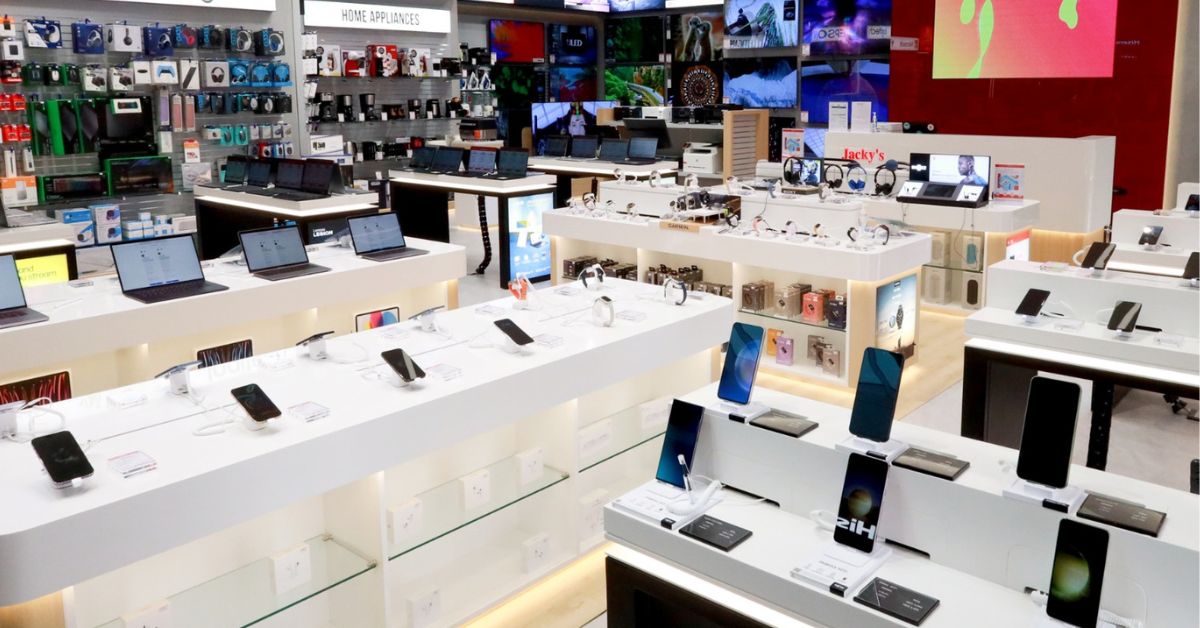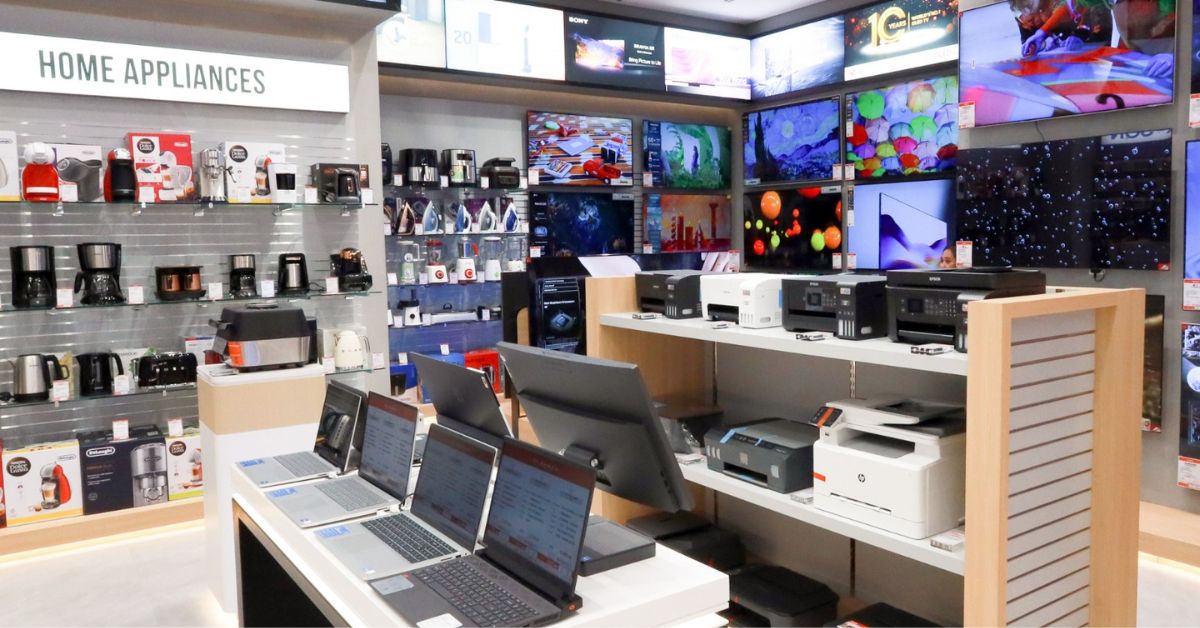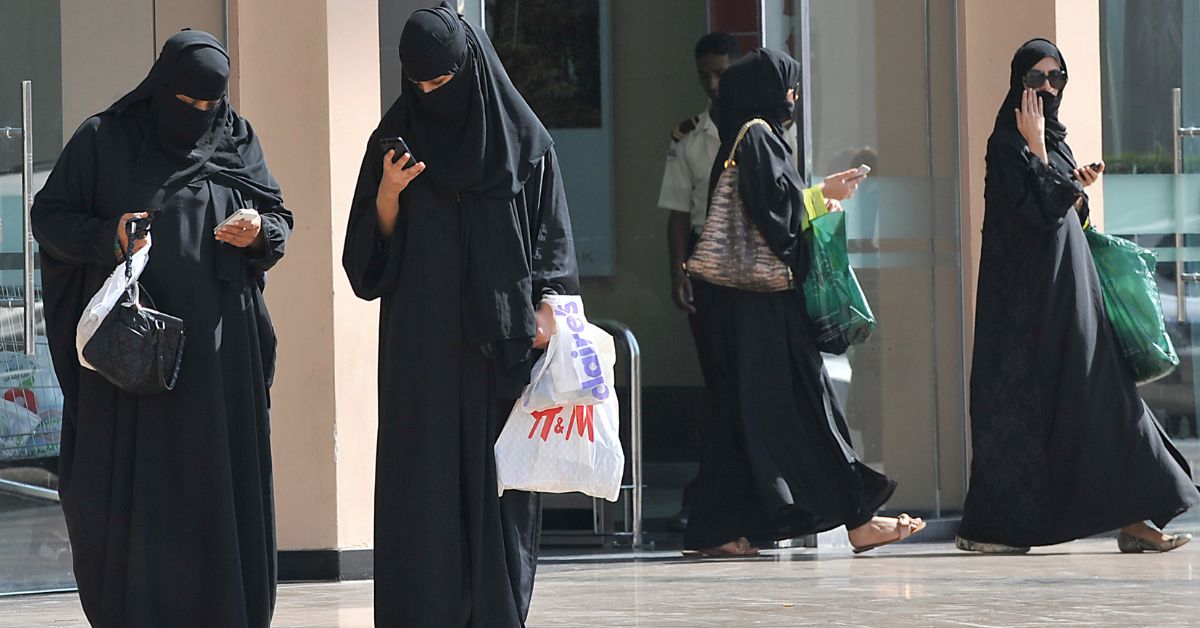Dubai, UAE — For Khadija Amiri, a Dubai teenager, being at a mall has an added perk: an augmented reality-based game can win her limited-edition pajamas. Glued to her smartphone screen at the Mall of the Emirates, Amiri is among thousands of young people across the Middle East targeted by mall owners with new gimmicks to keep their cash registers ringing.
The brand in question launched an AR-based game to engage consumers differently while gathering data to tailor personalized offers – something today’s consumers expect.
In the next two years, Snapchat expects 100 percent of Generation Z in the GCC to fully rely on AR, compelling brands to create immersive shopping experiences.
In the era of social commerce, as consumers seek an immersive CX (customer experience) and convenience, hybrid shopping has become non-negotiable.
According to research firm Redseer, the MENA digital economy is projected to reach $600 billion by the decade’s end.
Consumer behavior supports this estimate. For example, 74 percent of Saudi consumers plan to increase their use of local e-commerce platforms, according to a report by management consulting firm Kearney and Mukatafa, a Saudi Arabia-based institution uniting the public and private sectors in formulating industry policy and standards.
The shift toward online channels, especially in segments like electronics and fashion, has been evident recently, said Sandeep Ganediwalla, Partner – MEA, Redseer in an exclusive interview with TRENDS.
“In the GCC, online penetration has reached ~12 percent, resulting in e-commerce sales of ~$30 billion. Specific categories like smartphones, electronics accessories, and home décor have transitioned to digital-first categories, boasting an online penetration exceeding 50 percent. In fact, 30 percent of product discovery now happens exclusively online,” he added.

Sharing a retailer’s perspective, Ashish Panjabi, COO, Jacky’s Retail LLC and Jacky’s Business Solutions LLC said, “Historically, categories that sold best online were products consumers knew, like iPhones, Galaxy phones, MacBooks. On the other hand, large appliances and high-end TVs were harder to sell online. But that changed during the pandemic as people bought these products online, along with smaller items.”
Taking the cue, retailers began offering more detailed information online to facilitate sales. However, while consumers can compare a TV’s picture and sound quality online, they can also get more technical questions answered in stores, Panjabi highlighted, emphasizing the importance of brick-and-mortar.
But consumers seem to prioritize deals and better price points. UAE-based resident Cindy Mallier, a mother of a three-year-old, said, “I get better prices on platforms like Amazon for diapers, wipes, and other baby products, and they arrive the next day. Add to that the ease of returning when necessary, and not having to wait in line.”
In the GCC, online penetration has reached ~12 percent, resulting in e-commerce sales of ~$30 billion.
Sandeep Ganediwalla, Partner – MEA, Redseer
Asked about consumers comparing prices between channels, Panjabi explained, “Showrooming is a reality. Where possible, retailers try to match prices across channels. Additionally, we also do trade-in activities in stores,” which isn’t always available online.
Overall, the online market in the GCC is growing “slightly stronger” than offline, shared Jasmina Banda, Chief Officer and SVP of Fashion JVs at Chalhoub Group.
For instance, in the first half of 2023 in high-end fashion, e-commerce grew 16 percent versus mono-brand stores that grew 13 percent. Interestingly, this difference is primarily driven by Saudi Arabia, which, due to its size, offers a more fertile ground for online growth compared to other GCC countries, she elaborated.
According to Alpen Capital, GCC retail is expected to grow at a compounded annual growth rate (CAGR) of 5.7 percent by 2026. Across the region, non-food retail sales are forecasted to grow at a CAGR of 6.2 percent between 2022 and 2026, while food sales are anticipated to increase at an annual rate of 4.9 percent.
Storytelling is an integral part of retail.
Ashish Panjabi, COO, Jacky’s Retail LLC
The report added that Saudi Arabia and the UAE will lead sales regionally, cumulatively accounting for 78.5 percent of total sales by 2026. Retail sales in the Kingdom and the UAE are forecasted to grow at a CAGR of 6.5 percent and 5.1 percent, respectively, between 2022 and 2026. Meanwhile, Bahrain, Oman, and Kuwait are expected to grow at a CAGR of 7.3 percent, 6.1 percent, and 3.5 percent, respectively, during the forecast period.
However, there’s usually a story behind every purchase made in a physical store, whether it’s a family buying a new cooking range, a couple buying matching Stan Smiths, or the thrill of holding the newest model of a Samsung or Apple phone.
“Storytelling is an integral part of retail,” Panjabi agreed. Consumers enjoy the joy of weaving an experience around their purchases. In that sense, online can be impersonal. That’s why physical stores “aren’t going away,” he added. “That’s also why we regularly refresh our Samsung stores to offer an exciting in-store experience.”
Retail Detail in Numbers * 74% of Saudi consumers plan to increase use of local e-commerce platforms. * GCC online penetration: ~12%. * E-commerce sales in GCC: ~$30 billion. * Online penetration in specific categories like smartphones and electronics: over 50%. * E-commerce growth in high-end fashion in H1 2023: 16%. * Mono-brand store growth in H1 2023: 13%. * GCC retail CAGR projection by 2026: 5.7%. * Non-food retail sales CAGR between 2022-2026: 6.2%. * Food sales annual growth rate between 2022-2026: 4.9%. * Saudi Arabia and UAE to account for 78.5% of total sales by 2026. * Luxury segment worth: US$10 billion with nearly 10% annual growth.
Here’s a quick look at some cool examples adding excitement to the brick-and-mortar environment: Prada’s exclusive pop-up in Mall of the Emirates last year. Regional retail conglomerate Apparel Group’s e-commerce marketplace 6THStreet.com launched its phygital store in Dubai Hills Mall at the end of 2022. The unique, tech-fueled pop-up SKIN CARE NATION by Chalhoub Group’s homegrown beauty brand FACES is another example.
At this point, Banda shed light on luxury shopping trends in the region. “When it comes to luxury – a segment worth around US$10 billion with annual growth of nearly 10 percent – consumers across the GCC still enjoy shopping in physical stores, mostly in malls. It’s not easy to fully translate a store experience online, especially for ultra-luxury brands. And that applies across fashion, beauty, and particularly watches and jewelry.”
That’s a big reason why GCC malls are rebounding post-pandemic. However, according to Banda, one of the main challenges facing luxury retail is the “scarcity of luxury real estate across all countries with malls operating at maximum occupancy.”

Overall, the GCC retail landscape remains highly competitive, with many international brands vying for market share, while homegrown brands are gaining traction.
Making an interesting observation, Ganediwalla said, “The UAE is seeing an increased influx of expatriates from countries like Russia who aren’t familiar with online brands from the GCC. Naturally, they’re keen to first experience shopping offline, gradually finding their way to online channels.”
Grocery retail is another category where offline continues to dominate.
“I prefer to buy perishables in hypermarkets where I can find more options for fruits and vegetables, and often certain sale items are cheaper,” Mallier shared.
Over the past decade, a discount culture has grown strong, with sales and offers happening year-round.
When it comes to luxury – a segment worth around US$10 billion with annual growth of nearly 10 percent – consumers across the GCC still enjoy shopping in physical stores, mostly in malls.
Jasmina Banda, Chief Officer and SVP of Fashion JVs at Chalhoub Group
“I do almost 95 percent of my shopping during sale periods. Over time, I’ve come to know the sale periods and various offers. So, if it’s not urgent, I wait for those times and buy in bulk,” shared UAE resident Tsaeling Kwok.
“Recently, I bought some beauty products from Boots online, availing a discount that wasn’t available in-store. They also offered the option to pick up from any store, which was so convenient.”
Asked if she’s ever tempted to buy an extra item while picking up her order from the store, Kwok said, “The joy of getting a good deal online trumps the temptation to shop in-store.”
In this context, Panjabi said, “There’s a discount culture, but there’s also a culture of wanting service. That’s why hypermarkets coexist with specialty retailers in the same retail destinations. We all have our customer base, and we resonate with them.”
Repeat customers account for around 90 percent of total transactions for affordable fashion brand REDTAG, a figure that’s growing year-over-year in both brick-and-mortar and e-commerce retail channels.
Asked if one channel cannibalizes the other, REDTAG’s Chief Retail Officer Shehbaz Shaikh said, “Our repeat customers are increasingly gravitating toward omnichannel retail, engaging across online and offline touchpoints under different circumstances.”
Retailers must simplify ecosystems and integrate data to keep customers happy by providing the best possible experience across all engagement channels.
Amr AlMasri, Regional Director at Genesys, Middle East
However, unique challenges face both channels. In brick-and-mortar, pandemic-induced changes in consumer behavior have reduced store foot traffic. Customers now have more choices due to the rise in e-commerce options. While exchanges and returns due to the lack of tactile experiences related to color, size, fit, and fabric are significant challenges online.
“It entails added costs for retailers, putting upward pressure on margins. In other words, customers buy with their hearts and justify with their heads in stores. With e-commerce, they buy with their heads and justify with their hearts later. If anything, omnichannel aims to bridge that potential mismatch in expectations,” Shaikh observed.
Customers’ multi-channel interactions help brands derive valuable insights for CX strategies, he added.
If anything, customers’ expectations from merchants are rising in an increasingly competitive marketplace.
“Retailers must simplify ecosystems and integrate data to keep customers happy by providing the best possible experience across all engagement channels,” observed Amr AlMasri, Regional Director at Genesys, Middle East.

“It’s time for merchants to reconsider how they use technology to their advantage and focus on predicting customer needs,” he mentioned. “Organizations must improve efficiency through better self-service, a well-trained workforce, and the use of artificial intelligence (AI) and data integration across multiple touchpoints for predictive behavioral analytics and personalization to serve customers in the best possible manner.”
At the same time, raising caution, Saeed Ahmad, Managing Director for Middle East and North Africa at Callsign, highlighted the rising risk of fraud in retail, particularly e-commerce.
“Consumers should be on the lookout for increased phishing activity. Fraudsters often try to trick customers into providing usernames and passwords via email and text messages or by sharing links to fake websites. Additionally, it has become harder to distinguish between real and fake messages, with scammers using the same communication channels for phishing as banks and retailers use to authenticate genuine customers,” he said.
The region’s weather pattern, where summer months are quite harsh for outdoor activities, coupled with the rise of new experiences, supports the thriving mall culture.
New malls are opening in Saudi Arabia and the UAE, creating comprehensive experiences to attract shoppers. Majid Al Futtaim, for example, plans to expand further in high-growth markets like Saudi Arabia and Egypt.
On the other hand, a large mall operator in Saudi Arabia, Cenomi, has added 728,000 square meters of gross leasable area with seven new projects underway, including three flagship projects – Jewel of Riyadh, Jewel of Jeddah, and Jewel of Khobar.
The Avenues Riyadh project, developed on an area of 1.8 million square meters by Shomoul Holding Company, a joint venture between Kuwait Building Company, Al Fozan Holding Company, and Alshaya Group, is expected to become one of the largest commercial projects in the Middle East with a total leasable area of 400,000 square meters.
Add to that, mixed-use projects like Majid Al Futtaim’s Mall of Saudi Arabia with integrated lifestyle options. When completed, the Mall of Saudi Arabia will include 700 retail units, 100 F&B outlets, 182,000 square meters of office space, 1,800 residential units, 2,000 hotel rooms, and 29,700 square meters of leisure and entertainment offerings.

